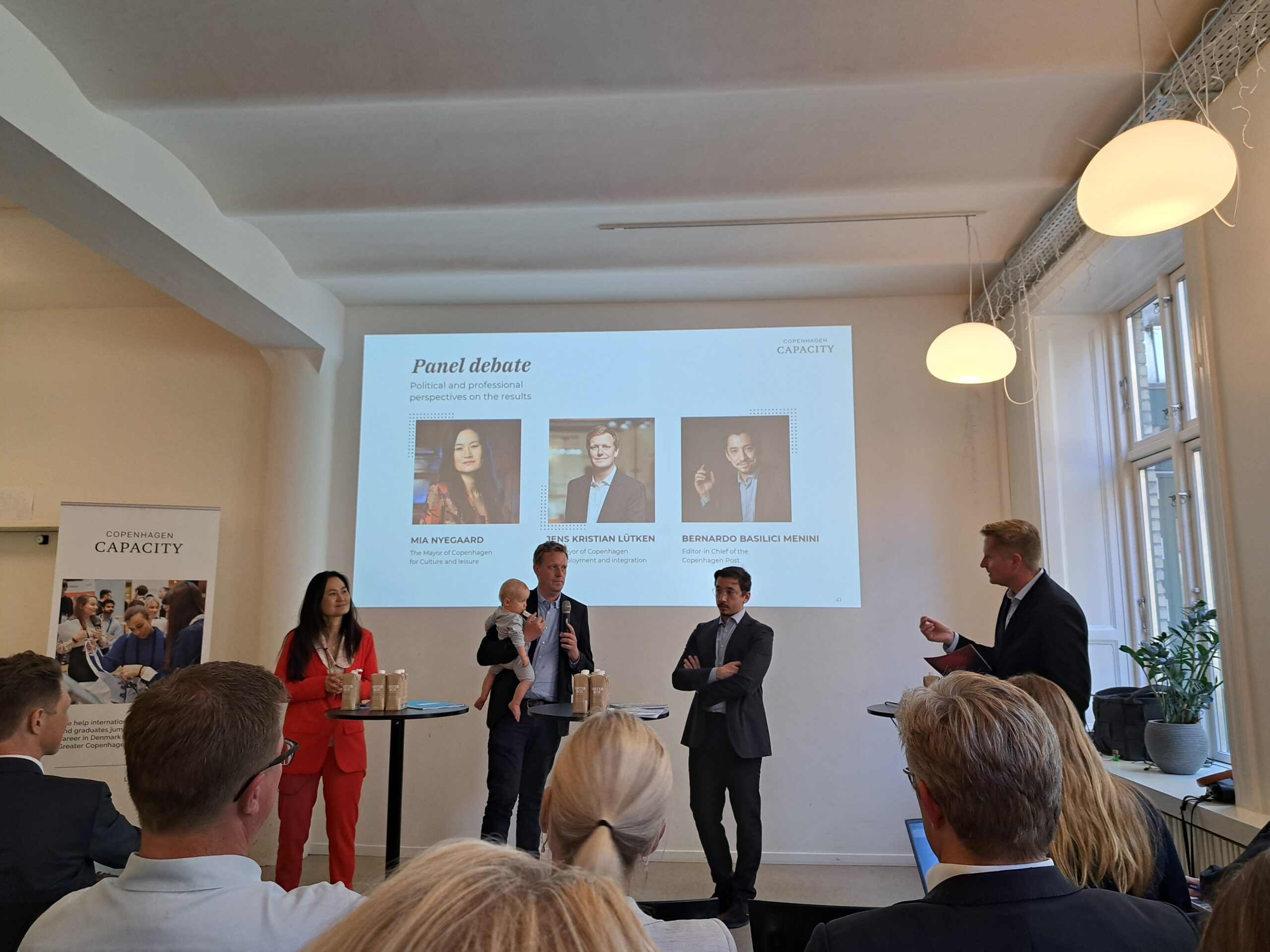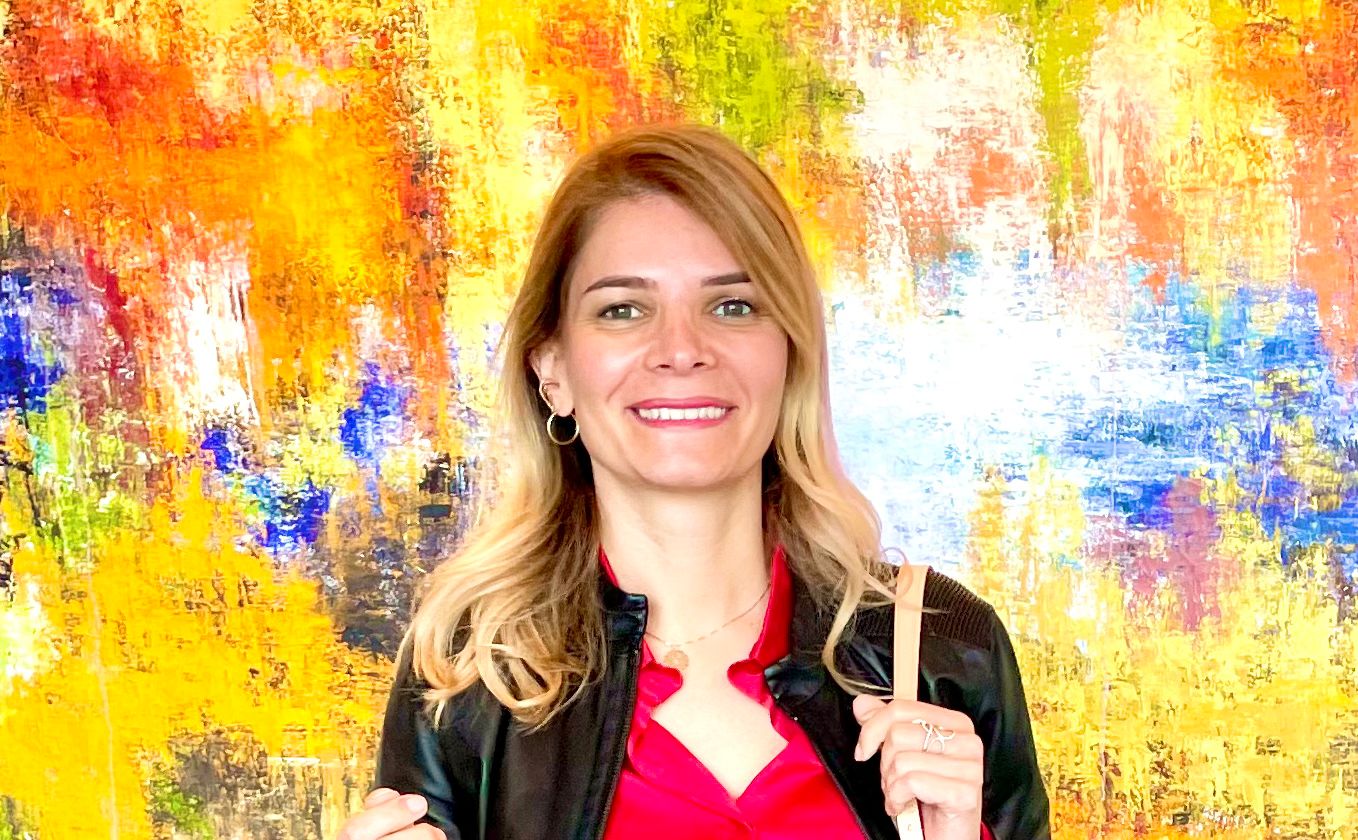We’ve all heard of someone accidentally pouring yoghurt into their morning coffee. It’s an easy mistake, especially when drowsy. The cartons are a similar shape and, in Denmark, the sheer number of different dairy products is baffling. But how can it be avoided?
By reading this ultimate guide to Danish dairy.
The Danish dairy industry
Denmark’s dairy industry has a long tradition for being cooperative-run, starting in the 19th century.
Arla Foods, the world’s sixth largest dairy company, is Danish-Swedish and plays an important role in the global market. But Denmark is also home to smaller dairy brands like Thise Mejeri, Øllingegaard and Naturmælk.
The density of dairy companies is high for a relatively small country and as such, Denmark has a rich offering of dairy products.
Milk
Sødmælk – is the equivalent of full fat milk, containing 3.5 percent fat.
Letmælk: the equivalent of semi-skimmed, containing 1.5 percent fat.
Skummetmælk: the equivalent of skimmed, containing 0.1 percent fat.
Minimælk: there is no equivalent for ‘mini’ milk, but it is between skimmed and semi-skimmed milk and contains 0.4 percent fat.
Kærnemælk: the equivalent of buttermilk, containing 0.3 percent fat. It’s aromatic, with a fresh, tangy flavour, and can be drunk and used in baking. It is a byproduct from the process of churning cream into butter and was originally used as pig feed. Today, it is made mostly independently of butter production.
For quick milk-identification in the supermarket, you can simply go by the colours:
Sødmælk is in a dark blue carton, letmælk in light blue, skummetmælk in grey, and minimælk in very light blue. Kærnemælk is easy to spot – it has a green carton.
Koldskål: A Danish specialty
Before diving into yoghurt, a mention for koldskål. This Danish specialty is not found in Norwegian or Swedish supermarkets, to their great dismay.
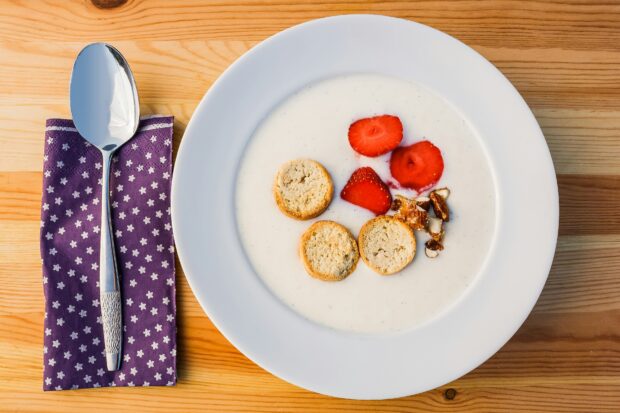
Literally, it translates to cold (kold) bowl (skål). It is made of kærnemælk mixed with egg yolks, vanilla, lemon juice and sugar. It has a fresh and sweet taste.
Koldskål was invented in the early 19th century, shortly after the buttermilk. During the interwar period, koldskål formed the base of a cheap, easy meal, combined with toasted bread leftovers.
Today, most people buy ready-made koldskål from brands like Thise Mejeri, Øllingegaard, and Arla.
Pour it in a bowl and add a particular kind of biscuit called kammerjunker. Go wild and add strawberries instead, or both. Right before summer, you will see koldskål in every supermarket.
Koldskål sales are very dependent on the weather, the hotter it is, the higher the sales. Over 6.1 million litres of koldskål were sold in May and June 2023, breaking a former record, according to a report from Arla.
The longlife koldskål is often left on the shelf when the fresh version is sold out – a strong indication that Danes have a favourite.
It can be enjoyed as a snack or as a dessert, while hardcore fans say it’s for any time of the day.
Yoghurt and alternatives
Danish yoghurt is easier to decipher. Yoghurt naturel, for example, is clearly natural yoghurt.
In the world of flavoured yoghurt, the most popular are strawberry and pear-banana.
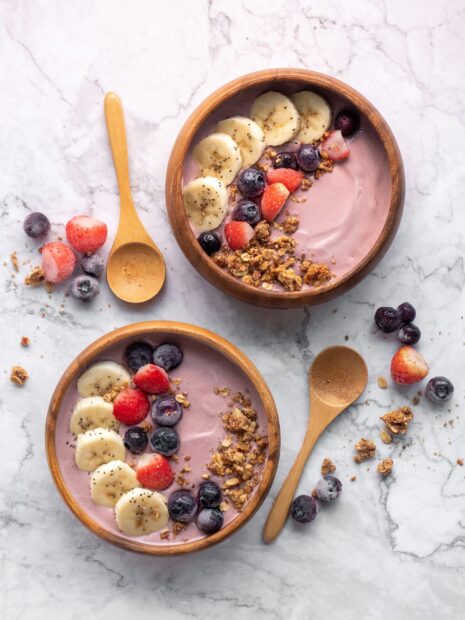
“Both are very appealing as they are sweet and fresh for both children and adults. Other popular flavours include vanilla and blueberry,” says Søren Bang Rasmussen, Category Manager, Milk & Yoghurt categories at Arla Foods.
White packaging usually means low sugar and fat, while blue and brown indicate full-fat yoghurt.
A38: it’s made from milk fermented with acidophilus culture, which contributes to its distinctive tangy flavour.
The product’s name has several explanations: “A” could stand for Andelsmejeriernes Mælkesalg, the company that launched it in 1938, or refer to the acidophilus culture it contains, alongside regular bacterial cultures. The number 38 marks the year it first appeared in Danish supermarkets.
Skyr: an Icelandic dairy product that resembles thick yoghurt. It’s made from skimmed milk, has a high protein content, a mild flavour, and a creamy texture. It gained popularity in Denmark due to its purported health benefits. It normally comes in one-kilo buckets or a single individual pack.
Ymer: is a traditional Danish dairy product similar to yoghurt. It’s made from fermented milk and has a slightly tangy flavour and a creamy texture. Ymer is enjoyed plain or with fruit, and it is known for its probiotic benefits. It has been a staple in Danish households since 1937.
Yoghurts are not colour coded, so you will have to read the labels before you choose the one you want to buy.
Cream
There are mainly four types of cream:
Kaffefløde: non-whipping cream for coffee.
Piskefløde: whipped cream.
Madlavningsfløde: literally, ‘cooking cream’.
Creme fraiche: an easy one, it’s crème fraîche.
Butter and spreadables
When it comes to butter, have a proper look at the package. If it says smør, then it’s butter. If it says smørbar you are holding a spreadable, not a ‘bar of butter’.
Cheese
There is a vast amount of cheese popular and readily available in Denmark. Here are the most common types.
Havarti: A semi-soft Danish cheese with a mild, creamy flavour and a smooth texture. It often has small holes and is used in cooking and sandwiches.
The cheese is named after Havarthigaarden, in honour of the local dairy pioneer Hanne Nielsen, although she did not invent it. A big lunchbox staple as it doesn’t smell.
Vesterhavsost: A Danish cheese named after the Vesterhavet (North Sea) region. Inspired by the Deutsch cheese gouda, it is a firm, aged cheese with a robust, tangy flavour and a slightly crumbly texture.
Ryeost: A soft white cheese made from whole milk and lightly smoked over oat or rye straw and nettles. It has a creamy texture, smoky aroma and light, fresh flavour, and is typically enjoyed with rye bread.
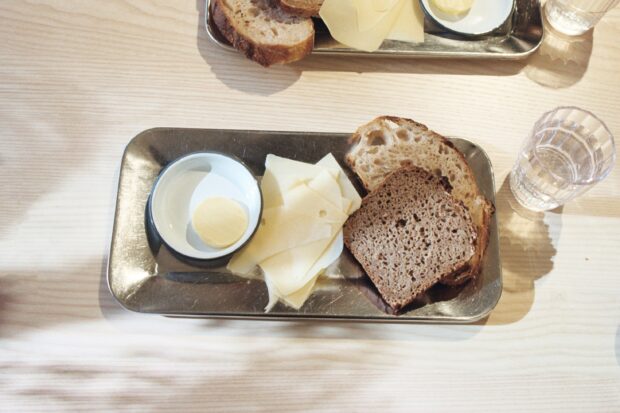
Cheeses are sold in large blocks or sliced in smaller packages. Most are colour coded according to how aged they are.
Mild: not a false friend, it really means mild. It comes in a red packet.
Mellemlagret: a little too sharp to be mild and a little too mild to be mature. It comes in a blue package.
Lagret: a mature cheese. This one has a black or green package.
Ekstra lagret: an extra mature cheese, which comes with a purple label.
Hytteost: cottage cheese, look for the hard, cylindrical, blue or light blue tub.
Looking for some feta cheese and can’t find any? Salatost i tern is the most similar you might find.
The percentage on the cheese package indicates the fat content of the finished product. But the number with a “+” (30+ or 45+, for example) refers to the fat content in the cheese’s dry matter, which includes only the solid part, not the water.
A 30+ cheese contains around 16 percent fat in the whole cheese, while a 45+ cheese contains about 27 percent fat. The higher the “+” number, the richer the cheese.
Congratulations, you are now a Danish dairy super-hero!
Armed with your new dairy wisdom, you’re ready to conquer the Danish supermarket.
May your koldskål always be cold and cheese perfectly aged!




